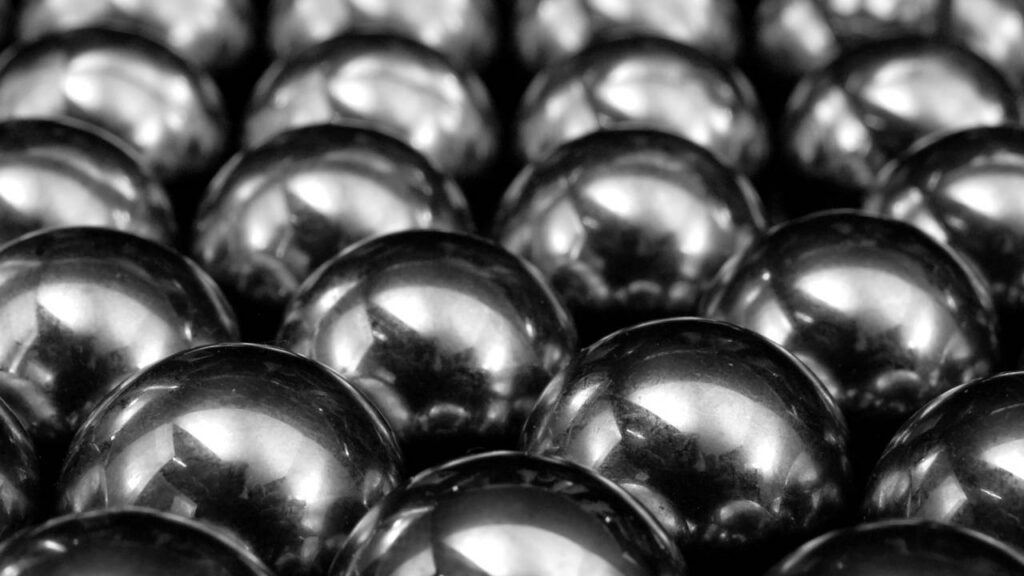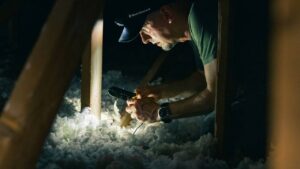Finding the best way to make your home more energy-efficient is always a top priority. Bonded bead cavity wall insulation might just be the solution you need. This method of insulating can increase your home’s energy efficiency and keep it warmer during those cold months.
You’re probably wondering about the pros and cons of this type of insulation. On the plus side, it’s effective in preventing heat loss and can lower your energy bills. This means a more comfortable living environment for you and your family.
There are a few things to consider before deciding on bonded bead insulation. While it offers excellent insulation properties, it’s essential to understand the potential costs and any specific requirements for your property. By weighing these factors, you can make an informed decision on whether this insulation is the right fit for your home.
What Is Bonded Bead Cavity Wall Insulation?
Bonded bead cavity wall insulation involves filling the gaps in cavity walls with specialised beads, typically of expanded polystyrene, adhered using a bonding agent. This type of insulation enhances energy efficiency and comfort in homes.
Understanding the Basics
Bonded bead cavity wall insulation consists of small polystyrene beads which fill the cavity walls of a building. These beads are injected into the cavity space and are bound together with an adhesive to prevent them from moving.
The beads create an effective barrier against heat loss by reducing air movement within the cavity. This can significantly improve the thermal performance of your home, making it warmer in the winter and cooler in the summer.
This type of insulation is particularly suitable for buildings with cavity walls, providing a reliable solution for reducing energy bills and carbon footprints. It’s a popular choice due to its effectiveness and relatively straightforward installation process.
Components and Materials
The primary components of bonded bead cavity wall insulation are expanded polystyrene beads and a bonding agent. The beads are lightweight and provide excellent insulation properties. When injected into the cavity walls, they expand to fit snugly, filling all gaps and ensuring an even distribution.
The bonding agent is crucial as it binds the beads together, preventing them from settling or moving over time. This ensures long-lasting performance and durability. The adhesive used is typically water-based and safe for both installers and residents.
Polystyrene beads are known for their high insulating properties and resistance to moisture, making them ideal for use in cavity wall insulation. They’re also resistant to decay and provide a sustainable, energy-efficient solution for homeowners.
Benefits of Bonded Bead Insulation
Bonded bead insulation offers multiple advantages that can significantly improve your home’s energy efficiency, reduce costs, and help the environment. These benefits include enhanced thermal efficiency, a reduced carbon footprint, and ease of installation.
Enhanced Thermal Efficiency
Bonded bead cavity wall insulation significantly enhances thermal efficiency. It reduces heat loss by filling the gaps in your cavity walls with insulating beads, thereby preventing warm air from escaping. This boosts the overall comfort of your home, keeping you warm during the winter and cool in the summer.
By reducing heat loss, you can achieve energy savings, leading to lower energy bills. The insulation helps maintain a stable indoor temperature, minimising the need for excessive heating or cooling. Many homeowners find this feature particularly cost-effective over time, with the initial investment paying off in savings on energy expenses.
Reduced Carbon Footprint
Using bonded bead insulation can greatly reduce your carbon footprint. By improving the energy efficiency of your home, you will use less energy for heating and cooling. This translates into fewer carbon emissions, contributing to a more sustainable environment.
Every step you take towards reducing carbon emissions is crucial, and investing in proper insulation is a significant move. Lower energy consumption also means you are doing your part in tackling global climate change. This eco-friendly aspect of bonded bead insulation appeals to environmentally conscious homeowners.
Ease of Installation
One of the standout benefits of bonded bead insulation is its ease of installation. The process usually involves drilling small holes into the exterior walls and injecting the beads, which then flow and fill the cavities seamlessly. This method ensures that the insulation material is evenly distributed throughout the wall cavities.
The quick and straightforward installation process means less disruption to your daily routine. Additionally, because it is a non-invasive method, it preserves the structural integrity of your walls. This makes bonded bead insulation a practical choice for homeowners seeking an efficient and minimally intrusive insulation solution.
Potential Issues and Solutions
Bonded bead cavity wall insulation can bring about some challenges related to moisture, structural integrity, and temperature regulation. Addressing these issues proactively can improve performance and longevity.
Managing Moisture and Dampness
Moisture and dampness can be significant problems with bonded bead insulation. If the insulation material gets wet, it can lead to damp patches on internal walls. This dampness often arises from inadequate external wall sealing or poor ventilation, causing condensation.
Steps to manage moisture:
- Ensure external walls are properly sealed to prevent water ingress.
- Include adequate ventilation systems to reduce moisture build-up.
- Regularly inspect for rising damp and take corrective measures if noticed.
Keeping your home dry helps prevent mold growth and maintains insulation efficiency.
Mitigating Structural Concerns
Structural damage might occur if insulation is not installed correctly or inspected regularly. Problems like debris in cavities can cause uneven insulation and potential load-bearing issues. The weight of the insulation might stress the walls if not uniformly distributed.
To mitigate these concerns:
- Hire certified professionals to install your insulation.
- Conduct regular inspections to check for signs of structural damage or settling.
- Clear debris from wall cavities to ensure even distribution of the insulation material.
Proper installation and maintenance are crucial to retaining structural integrity.
Preventing Cold Spots
Cold spots can emerge if the insulation material does not cover the cavity completely or cold bridging occurs. These spots not only reduce energy efficiency but can also lead to damp patches and mold.
To prevent cold spots:
- Check for gaps around windows, doors, and other openings to ensure thorough insulation.
- Use thermal imaging to identify and address any cold bridging.
- Consider additional insulation solutions for hard-to-reach areas.
Addressing cold spots helps maintain a consistent internal temperature and enhances overall comfort indoors.
Long-Term Performance and Maintenance
Bonded bead cavity wall insulation is known for its longevity and minimal maintenance requirements. Proper installation and subsequent checks can lead to significant energy savings and ensure the insulation remains effective.
Durability and Lifespan
Bonded bead insulation has an impressive lifespan, often lasting the lifetime of the building. The insulation material is designed to resist moisture and settling, maintaining its insulating properties over time. When installed correctly, it ensures excellent energy efficiency and durability.
Guarantees provided by installers typically cover the insulation for up to 25 years. This coverage reflects the high confidence in the material’s long-term performance. Regular inspections by a surveyor can help in identifying any potential issues early on to sustain efficiency.
Insulation Checks and Top-Ups
To maintain optimal performance, periodic insulation checks are recommended. These checks can identify areas that might require retrofitting or top-ups. It’s important to monitor for any signs of moisture ingress or areas where beads may have displaced.
Routine inspections ensure the cavity insulation continues to provide maximum energy savings. Professional check-ups every 5 to 10 years will keep your insulation in top condition, safeguarding your investment and ensuring ongoing energy efficiency.
Considerations for Installation
When installing bonded bead cavity wall insulation, it is crucial to select a certified installer and ensure compliance with regulations. Proper inspection and surveying are also key to a successful installation.
Choosing the Right Installer
Selecting a certified installer is essential. Certified professionals adhere to industry standards and regulations, providing you with peace of mind. A reliable installer should also offer a guarantee for the work completed. This ensures that any potential issues that arise post-installation can be addressed promptly and professionally..
Building Regulation Compliance
Ensuring your installation meets building regulations is vital. Bead cavity wall insulation must comply with local building regulations, which stipulate criteria for materials, placement, and overall building integrity.
Checking with your local authority on specific requirements before beginning the installation process can save you from potential legal issues and fines. Regulations often require installations to maintain the breathability of walls, preventing condensation and moisture build-up. It is also crucial to ensure that your installer prioritises compliance and uses materials that meet regulatory standards.
Inspection and Surveying
Prior to installation, a thorough inspection and surveying of your property are necessary. This is typically done by a surveyor who checks the wall cavities for suitability. Using a borescope, the surveyor can inspect the inside of cavities for any pre-existing issues, like cracks or dampness, which need addressing before insulation.
Assessments also identify the best approach for installation, including the amount of insulation material required and any potential obstacles. Proper inspection can prevent future problems and ensure maximum efficiency of the insulation. Always ensure that this step is performed by a competent professional to adhere to all safety and performance standards.
Alternatives to Bonded Bead Insulation
There are several insulation materials and methods you can choose from. Each has its unique benefits and considerations, perfect for different needs and preferences.
Comparing Different Insulation Types
Blown Mineral Wool Fibre: This insulation is applied similarly to bonded beads. It provides good thermal performance, though it may settle over time.
Spray Foam Insulation: Available as either open-cell or closed-cell foam, spray foam offers high thermal resistance. It fills gaps effectively and provides excellent airtightness but can be more expensive.
Polyurethane Foam: Known for its high insulating value, this foam offers durability. It’s particularly good for uneven space filling, ensuring there are no gaps where heat could escape.
Polystyrene Beads: Like bonded beads, these can be blown into cavities. They are lightweight and offer decent thermal performance. However, they can sometimes shift, creating air gaps.
Solid Wall Insulation Options
Internal Insulation: This involves attaching insulation boards or constructing a stud wall filled with insulation materials inside your rooms. It reduces room size slightly but significantly improves energy efficiency.
External Insulation: Insulating the exterior walls with materials like mineral wool or expanded polystyrene. This method helps to maintain the interior space and also protects the brickwork from weather.
Spray Foam for Solid Walls: You can also use spray foam on solid walls for a seamless barrier against heat loss. It’s effective but might require a professional for proper application.
Retrofitting Solid Walls: For older buildings, retrofitting is essential. Using a combination of internal and external insulation could provide the best results. This process needs careful consideration, especially to avoid damp issues.


